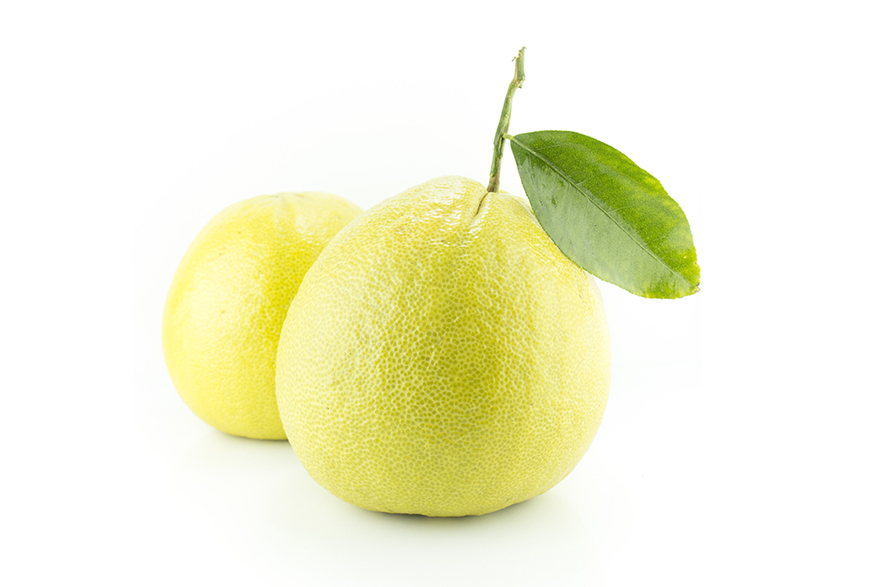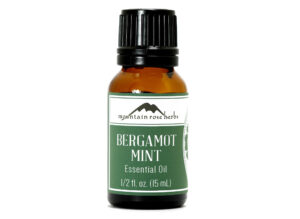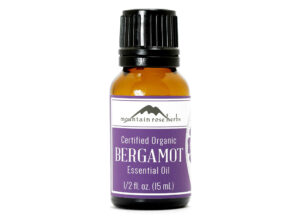Bergamot Essential Oil
Imagine a fruit that looks like a pear-shaped orange, growing on small trees with a height of about 16 feet. This is the fruit of the Bergamot, crisp, and citrus in aroma, soothing and energizing, depending on its use.
History and Folklore of Bergamot Essential Oils
When Americus Vespucci and Christopher Columbus were busily discovering the new Western World, they brought their eastern traditions and medicinals into the western globe. Eastern established remedies, like Bergamot Essential Oils, were brought into our world all the way from the Canary Islands in the 16th century.
There were common beliefs that Bergamot essential oil would work to heal skin problems, soothing respiratory and urinary tract infections, breaking fevers, and killing intestinal worms, not because of the scientific knowledge we use today, just simply because the healers of the day learned through practice that this worked reliably.
Mothers passed down information that they learned through experience as well, like when they massaged bergamot into the abdominal region of a child suffering from colic or gas pain, they could relieve the symptoms and the child would relax and be able to sleep.
Modern Processes and Applications of Bergamot Essential Oil
Before the green fruit of the Bergamot Tree is completely ripened, the fruit is harvested and the skin is cold-pressed for its valuable aromatic oils. One widespread use for Bergamot oil is in the manufacture of Earl Grey Tea. Bergamot is also produced for use as massaging oil blends, aroma lamp oils for soothing anxiety and depression, and now science has proven the antimicrobial properties work to relieve urinary and bladder symptoms when applied as a bath soak remedy. The addition of Bergamot into coconut oil creates an effective cold sore treatment and relieves sensitive chapped lips. Scientific studies also show that Bergamot essential oil helps reduce high blood pressure and reduce autonomic nervous system stress.(1)
Modern applications also include lovely scented perfume combinations like lavender and neroli with bergamot oils. The Bergamot essential oils bring fresh notes of natural fragrance both sweet and citrus, with a floral undertone that stabilizes emotions, calms, and strengthens the nervous system, relaxing tension and insomnia. Adults also gain benefits of symptoms relief of gastronomic pain and aided digestion. “Bergamot is antibacterial and effective in the treatment of bladder infections and vaginitis used in a soaking bath. To treat sore throats use 3 drops of bergamot with 1/8 teaspoon salt in 1/2 cup warm water as a gargle.”(3)
One of the differences between using temporary aids to digestive problems like antacids, or medications that reduce the acid flow into the digestive tract, is that only treats the symptoms. Using the essential oils like bergamot will address the core problem to heal the actual cause and bring more permanent relief.
Buy Bergamot Essential Oil
Bergamot mint essential oil is steam distilled from Mentha citrata, and it is sometimes referred to as orange mint or Eau de Cologne mint. This leafy herb is part of the mint family, with no relation to the bergamot citrus. Like other mint oils it is uplifting and energetic, and due to the constituent balance is also quite calming for the mind.
This oil is pleasantly fresh for diffusing, bright perfume blends, body care recipes, and aroma sprays. The fresh plant closely resembles Mentha aquatica, or water mint, and has purple tinged leaves with dainty purple flowers.
Aroma
Distinctly minty and sweet with refreshing notes of citrus.
Constituents
This oil is predominately composed of linalool and linalyl acetate, with β-caryophyllene, α-terpineol, and β-pinene making up less than 3% each. This oil typically has less than 1% menthol content, compared to most peppermint oils containing 30% or more menthol in their oils.
Blending and Uses
Uplifting bergamot mint is an excellent oil for perfumes and colognes. It blends very well with lavender oils as they tend to have complimentary constituent balances. Use with citrus oils such as sweet orange or lime, or woods-like oils of cedar and pine.
For a calming experience in massage oils and diffusers blend this oil with clary sage, sandalwood, and ylang ylang. Bergamot mint is also attributed to healthy sensuality and closeness, and can be combined with related oils like geranium or palmarosa.
Bergamot mint can be used as a single aroma, or with any of these blends in your favorite cosmetics such as lotion, deodorant, shampoo, or lip balm. Add to carrier oils for a gentle abdominal massage blend for occasional digestive upset.
Packaging
1/2 oz. and 1 oz. essential oils are packaged in amber glass bottles with drop reducers for easy application. Larger sizes are packaged in amber screw cap bottles and do not come with reducers or droppers.
Safety
This oil has no known precautions. Never use essential oils undiluted, in eyes or mucus membranes. Do not take internally unless working with a qualified healthcare practitioner. Keep away from children and pets.
Before using perform a small patch test on your inner forearm or back. Apply a small quantity of diluted essential oil and cover with a bandage. If you experience any irritation use carrier oil or cream to further dilute the essential oil, and then wash with soap and water. If no irritation occurs after 48 hours it is safe to use on your skin.
Our organic bergamot oil is cold pressed from fruit peels and then fractionated to remove the bergaptene, making this oil non-phototoxic. It is used in all kinds of cosmetic recipes such as lotions, hair care, salves, and especially in perfumery.
This fragrant citrus is mainly found growing in southern Italy but is also cultivated in France, Turkey, the Ivory Coast, South-East Asia, and parts of South America. Though the fruit is used for some confections and juice, bergamot is predominately grown for its essential oil. It is also used to make the familiar aromatic ingredient in earl grey tea.
Aroma
It has a fresh citrusy aroma with sweet, floral, and bitter notes.
Constituents
This oil contains limonene, linalyl acetate, linalool, sabinene, γ-terpinene, and β-pinene.
Limonene is prevalent within a large variety of essential oils such as sweet orange, grapefruit, lemon balm, and celery seed. Linalyl acetate is in clary sage, lavender, and lavandin grosso oils. Linalool will also be found in a wide variety of oils like ho wood, lavender tea tree, and neroli. Sabinene, γ-terpinene, and β-pinene are all found in black pepper, juniper berry, and nutmeg oils.
Blending and Uses
Bergamot is most popular in perfumery. It is blended with many other oils such as lemon, lime, tangerine, lavender, neroli, thyme, orange, jasmine, and petitgrain in a base of ethanol In the classic 1709 German formulation Eau de Cologne, which has since become the namesake for generic “colognes”. It marries beautifully with other floral oils such as ylang ylang or helichrysum and can also add refreshing top notes to more masculine-style colognes with cedarwood, vetiver, and bay laurel.
Its emotionally uplifting aroma is comforting during times of grief and sadness. Diffuse with lavender, sandalwood, and clary sage to create a calm atmosphere in any room. For a more awakening diffuser blend, combine with sweet orange and peppermint.
In skin care formulations, bergamot is typically geared towards oily skin or occasional blemishes in toner sprays, salves, or creams. Add to liquid hand soap or shampoo for a fresh scent. It can also be used in DIY cleaning solutions alone or mixed with lemon or thyme oils.
Packaging
1/2 oz. and 1 oz. essential oils are packaged in amber glass bottles with drop reducers for easy application. Larger sizes are packaged in amber screw cap bottles and do not come with reducers or droppers.
Safety
This oil has no known precautions. Never use essential oils undiluted, in eyes or mucus membranes. Do not take internally unless working with a qualified healthcare practitioner. Keep away from children and pets.
Before using perform a small patch test on your inner forearm or back. Apply a small quantity of diluted essential oil and cover with a bandage. If you experience any irritation use carrier oil or cream to further dilute the essential oil, and then wash with soap and water. If no irritation occurs after 48 hours it is safe to use on your skin.



